Uneven tire wear in Porsche Panamera is a major safety risk. Regular tire inspection for uneven wear alerts you of any problems that may lead to an accident-causing blowout. In this article we go through the reasons for uneven tire wear in Panamera, and how the tire wear pattern can help you with diagnosis.
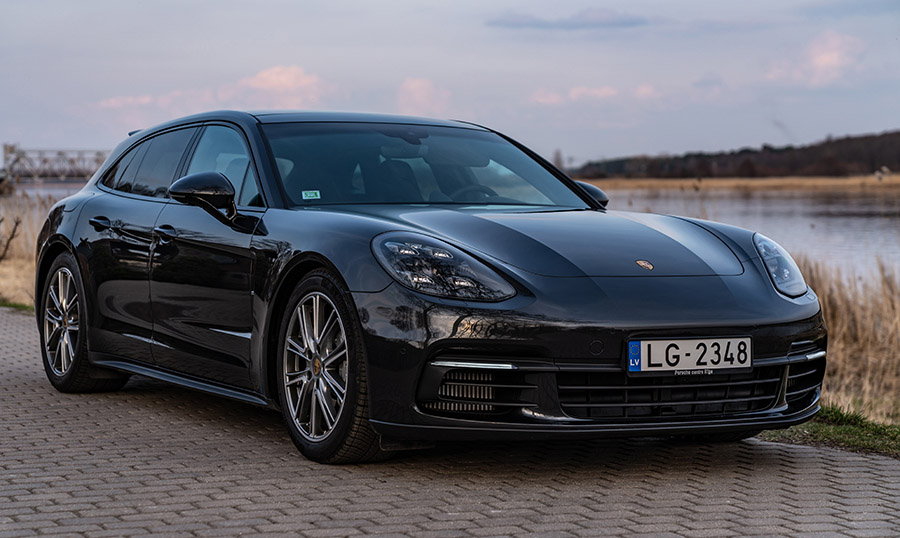
Uneven tire wear in Porsche Panamera can be caused by bad wheel alignment, overinflated or underinflated tires, worn steering and suspension components, faulty wheel bearings, or a bent rim.
Types of uneven tire wear
Increased tire wear on the outside
One of the most likely causes of Panamera tires wearing on the outside is improper wheel alignment. Two values are decisive here, too high a positive value for the camber setting (wheel stands out too far at the top), or too much toe-in (wheels are too far together at the front in the direction of travel).
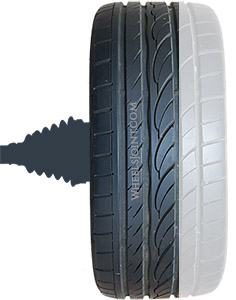
Increased tire wear on the inside
Here, too, the main cause of Panamera tires wearing more on the inside is incorrect wheel alignment. The same values as in the previous example are decisive, but with the opposite sign: too high a negative value for the camber setting (wheel is too far in at the top), or too much toe-out (wheels are too far apart at the front in the direction of travel). Suspension parts that are worn out or deformed by an accident or curb contact can be another reason.
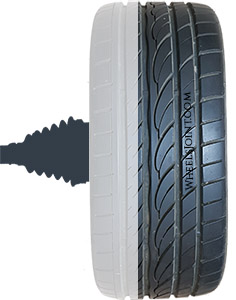
Increased tire wear on the outside and inside
Such a wear pattern indicates that you have been driving your Panamera with low tire pressure far too long. The contact area of the tire is so wide that the outer and inner tread surface is subjected to particularly high loads. The significantly increased rolling resistance also leads to increased fuel consumption.
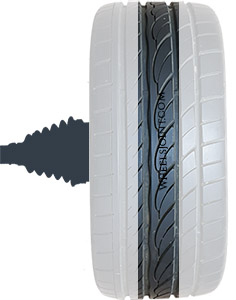
Increased wear in the center of the tire
Such a wear pattern indicates that you’ve been driving your Panamera with too high tire pressure far too long. This means that only the center of the tire serves as a contact area and is therefore subject to increased wear. In this case, not only the tire suffers, but the reduced contact area of the tire on the road impedes the power transmission, which can lead to the vehicle skidding! A regular check of the air pressure (once a month is a commonly recommended) increases both the service life of the tire and your safety.
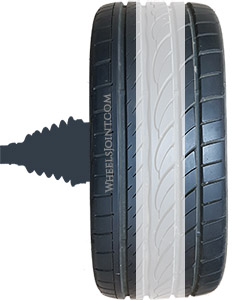
Increased wear at several points across the tire (tire cupping)
The most likely cause of Panamera tire wearing at several points is defective shock absorber. The shock absorbers ensure that the wheel always has even contact with the road, even on uneven roads. If the damper is defective, the wheel keeps lifting off the ground, which leads to the wear pattern shown. A regular check of the shock absorbers is therefore also of great importance for the service life of the tires and steering components. Another, less common cause can be an improperly balanced tire.
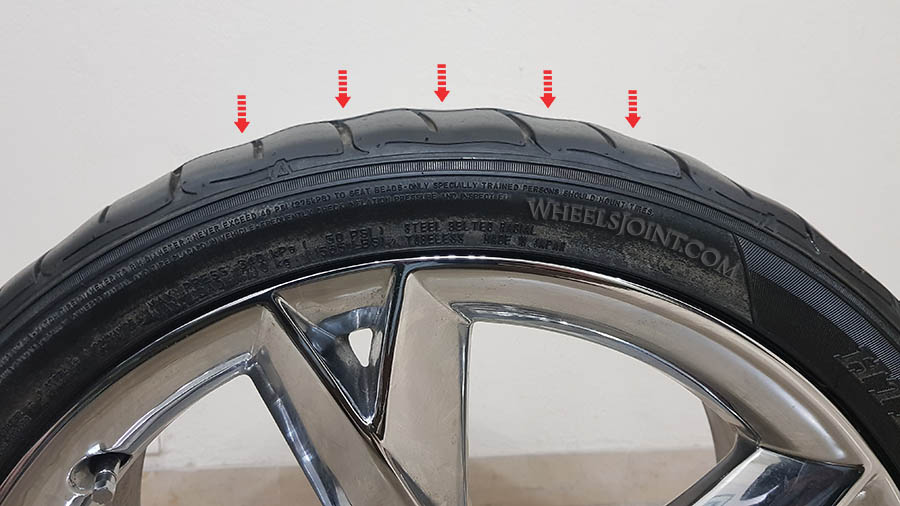
1. Bad wheel alignment
Misaligned wheels is a leading cause of uneven tire wear in Porsche Panamera. Wheel alignment is an important and often overlooked aspect of maintenance. Potholes and curbs can easily misalign your wheels, resulting in poor control and excessive wear on your tires.
What are the symptoms of bad wheel alignment in Porsche Panamera?
The most obvious sign of misaligned wheels in Panamera is when your vehicle pulls to one side and you constantly have to adjust the steering wheel to drive in a straight line. Some other signs include uneven or rapid tire wear, crooked steering wheel when driving straight and squealing tires.
How is wheel alignment performed on Porsche Panamera?
Wheel alignment is primarily carried out using electrical diagnostic tools. Using sensors that are attached to the wheels of Panamera, a computer system recognizes the extent to which the actual values deviate from the target values. The target values are the standardized values specified by the manufacturer. The measured values can be compared on a computer and deviations are interpreted and corrected directly.
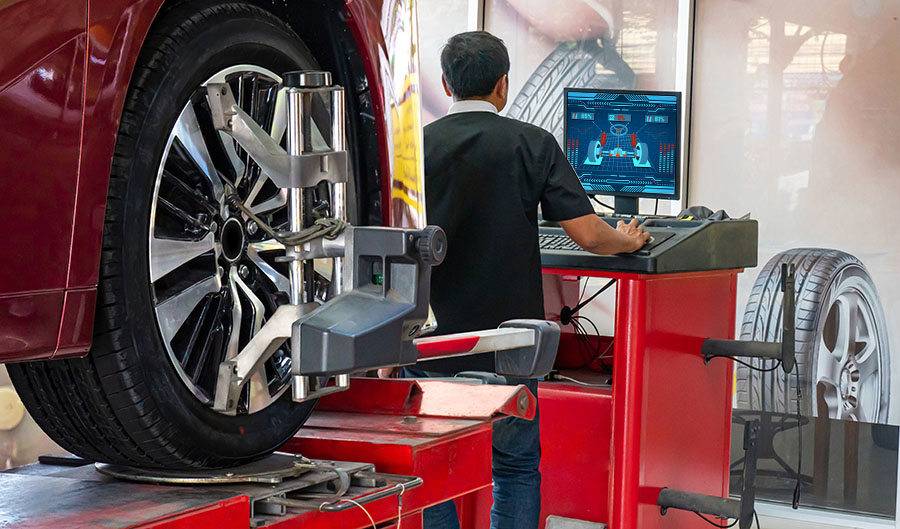
How often should wheel alignment be performed on Porsche Panamera?
In contrast to wearing parts, there are no fixed maintenance intervals or manufacturer specifications for wheel alignment. Therefore, such a review is usually at your own discretion. Nevertheless, it is advisable to check the treads at least as part of the tire rotation every six months or 5,000 to 7,000 miles. Do note that driving habits can heavily influence how often you need to get your Panamera wheels aligned.
2. Incorrect tire pressure
Incorrect tire pressure is a common cause for uneven tire wear in Porsche Panamera. Lower tire pressure increases the contact area of the tire tread with the road surface which leads to higher friction on the outer and inner tread surface. Similarly, if the tire pressure is too high, only the center of the tire serves as a contact area and is therefore subject to increased wear.
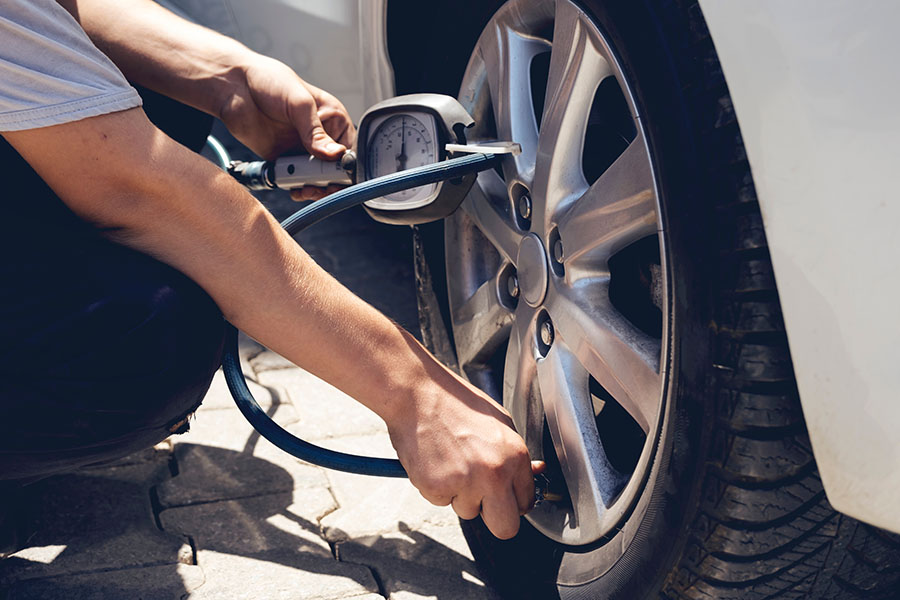
If your Panamera is equipped with tire pressure monitoring system, also called TPMS, the amber colored low tire pressure warning light  may illuminate in the instrument cluster in case of incorrect tire pressure.
may illuminate in the instrument cluster in case of incorrect tire pressure.
Check tire pressure
Reinflate all the tires of your Panamera to the manufacturer specified air pressure, which is mentioned on the vehicle placard or tire inflation pressure label usually located on the B-pillar or the edge of the driver door. If you can’t find the label, check the owners manual of your vehicle.
3. Worn suspension and steering parts
Looseness in suspension or steering system components can cause uneven tire wear in Panamera. Overly worn ball joints or tie rod ends makes it difficult to properly align your vehicle.
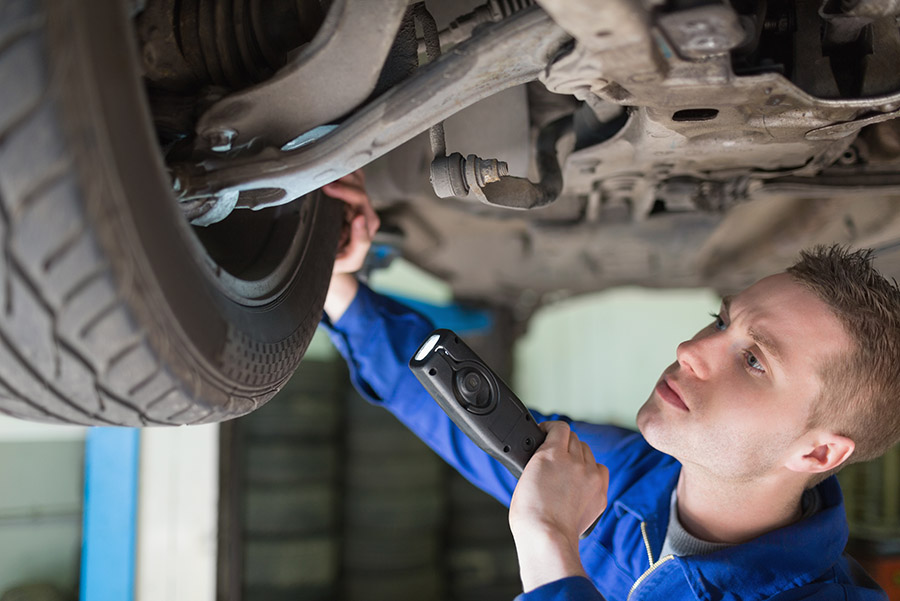
Some common signs include vibrations from the front end or through the steering wheel, clunking or rattling noise coming from your front suspension especially when going over speed bumps or when turning the vehicle. In extreme cases, your front end can not only vibrate but also shake violently at high speeds, this phenomenon has been nicknamed “death wobble”.
4. Bad wheel bearing
Too much play in a wheel bearing can also cause abnormal tire wear in Porsche Panamera. The most common signs of a bad wheel bearing are grinding noise in the cabin when driving straight, a knocking noise when cornering, and the vehicle vibrates. The faster you drive, the louder the grinding noise and stronger the vibration.
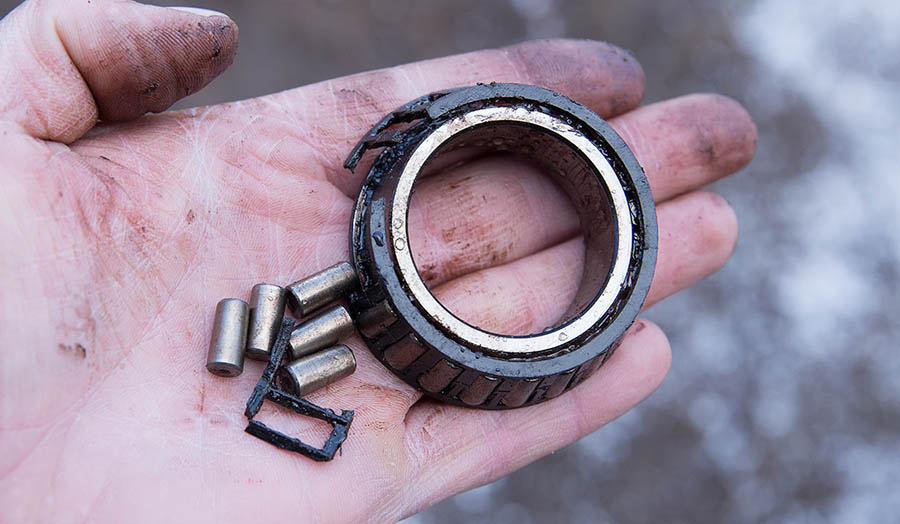
What causes bearings to fail in Porsche Panamera?
Even when driving your Panamera in a straight line, the bearings have to absorb high radial forces. The entire weight of the vehicle rests on the bearings. When driving, the speed creates additional forces. If a curve is then also driven through, axial forces occur. High impacts on the bearings also occur on uneven roads or when driving through potholes. Impacts of all kinds are much more damaging to bearings than the high loads. Therefore, all wheel bearings eventually fail. However, how soon they fail depends on driving habits. Other factors can also contribute to premature bearing failure on your Panamera, like driving with unbalanced tires or poor wheel alignment.
Sound of a bad wheel bearing (humming noise)
How to check for a faulty wheel bearing in Panamera?
The first sign of faulty wheel bearing in your Panamera is obviously the humming noise. Second sign is that the noise changes when cornering, which varies depending on the steering angle and thereby increases or decreases: a “hum” when turning left, for example, usually indicates a defective wheel bearing on the right-hand side and vice versa.
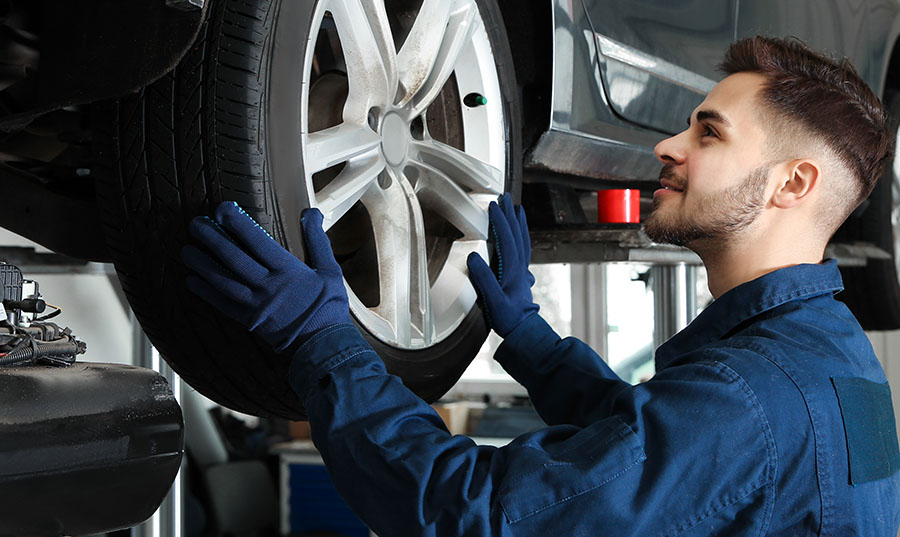
Should I replace only the defective wheel bearing in Panamera?
In general, it is advisable to change the second bearing on the same axle even if there is only one defective wheel bearing in your Porsche Panamera. It can be assumed that both bearings were subjected to roughly the same stress and that the failure of the second bearing is imminent. If they are replaced at the same time, this saves time and money.
5. Bent rim
A bent rim can also cause uneven tire wear in Panamera. Such damage usually occurs when obstacles such as curbs, speed bumps or deep potholes are driven over too quickly. This may also lead to vibration especially when driving at high speeds. Balancing the wheels and performing wheel alignment would probably not fix the problem, a bent rim must be replaced.
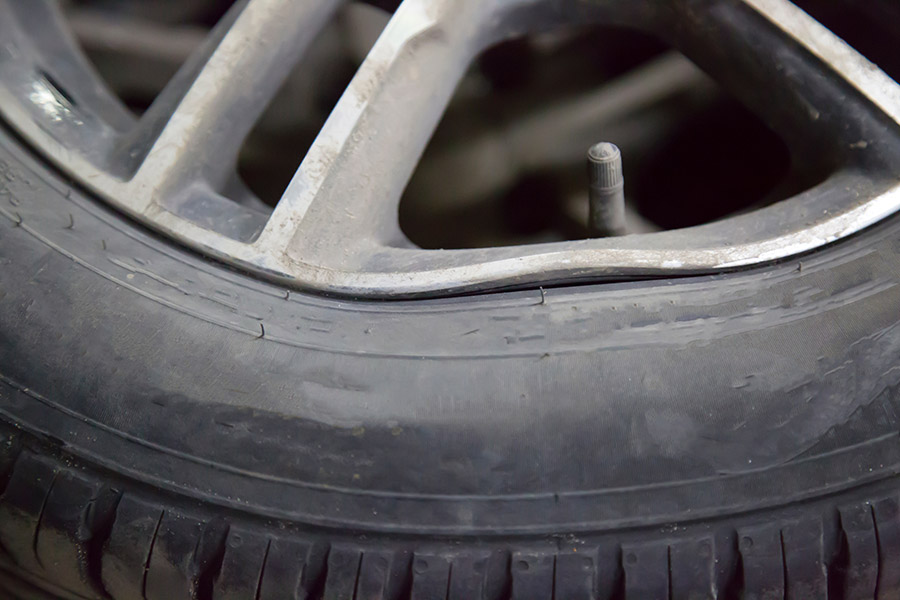
Even if there is no visible damage, the whole rim could be deformed resulting in uneven diameter. An experienced mechanic can tell if the rim is bent by mounting it on the wheel balancing machine.
Conclusion
There are many reasons for uneven tire wear in Porsche Panamera. When looking for the reason, you should always start with the most obvious causes, misaligned wheels and incorrect tire pressure.







